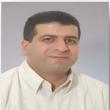Breast cancer
Herbal Remedies Use by Breast Cancer Patients in the West Bank of Palestine
Mon, 2016-02-01 12:44 — Nidal Amin JaradatEthnopharmacological
relevance:
Recent
ethnopharmacological surveys showed that herbal remedies are the most preferred
modality of complementary and alternative medicine (CAM). In Palestine as in
many other countries, herbal remedies are widely used in the treatment of many
diseases.
Aim of the study:
The
aim of this study was to investigate the use of herbal remedies by women living
with breast cancer in the West Bank of Palestine.
Methods:
This
study was a questionnaire based cross-sectional descriptive study on the use of
herbal remedies by breast cancer patients in the West Bank. A questionnaire was
distributed to 115 patients at outpatient cancer clinics in face to face
interviews.
Results:
The
study had a response rate of 89.6%. Of all respondents, 68% were herbal
remedies users. Women with breast cancer used 46 plant species belonging to 32
families. Of these, Brassicaceae and Lamiaceae were the most prevalent. Ephedra
alata was the most commonly used plant species in the treatment of breast
cancer. Leaves and seeds were the most commonly used parts and decoction was
the most commonly used method of preparation. Herbal remedies users were more
likely to use herbal remedies instead of chemotherapy. The most commonly stated
reason for using herbal remedies was the belief in boosting the patient's
immune system to fight cancer.
Conclusion:
The
use of herbal remedies is prevalent in breast cancer patients in Palestine. The
use of herbal remedies was associated with educational level, time since
diagnosis, type of surgery use, and use of endocrine therapy. It was apparent
that the majority of users were satisfied with herbal remedies use. Clinical
trials and pharmacological tests are required to be established for the presence
of side effects, toxicity and efficacy for these herbal remedies.
Pattern of Mammography Test Use Among Women In Nablus/Palestine: A Cross Sectional Study
Mon, 2014-06-16 09:18 — Samar MusmarBreast cancer is the most common cancer in women, which can be early detected by mammogram test (an x ray of the breast). Screening mammography is one of the best techniques that can find majority of breast cancer cases in women over 50. The main objective of this study is to illustrate the different socio-demographic patterns of use and their relationship to mammography test results in Nablus district. Methods: This is a cross sectional study that included all women from Nablus area who underwent mammography test in the Palestinian Family Planning & Protection Association center (PFPPA) during 2007. Socio-demographic data (age, marital status, parity, residence, breastfeeding, education level and source of referral) from 556 files of women were collected, in addition to the mammography test result whether malignant or not. Data then were analyzed applying descriptive studies, and chi square test. Results: most of the study sample were of age interval (35-47) years old, married, breastfed, with parity interval 3-5, highly educated, inhabiting the city, and were self-referred. There was a significant statistical association between age, parity and mammography test results (p<0.05), however there was no significant statistical relationship for all other variables. Profile of self-referred women was of no big difference when compared to all study sample variables. Conclusion: Awareness towards doing mammography in Nablus/Palestine seems to be good; however the most vulnerable group is still not doing it frequently. Older women, less educated, single, and women from refugee camps need to be reached out to increase their awareness to go for screening mammography.
GST Isoenzymes In Matched Normal And Neoplastic Breast Tissue
Sun, 2013-04-14 16:18 — Awni A. M. Abu-HijlehThe potential to metabolize endogenous and exogenous substances may influence breast cancer development and tumor growth. Therefore we investigated GST activity and the protein expression of glutathione S-transferases (GSTs) isoenzymes known to be involved in the metabolism of endogenous and exogenous carcinogens in breast cancer tissue to obtain new information on their possible role in tumor progression. The interindividual variation in the conjugation of 1-chloro-2,4-dinitrobenzene (CDNB) and of 1,2-epoxy-3-(p-nitrophenoxy) propane (EPNP) with glutathione (GSH) by cytosolic glutathione S-transferases (GSTs) were investigated in human breast matched normal and tumor samples. The GSTA, GSTM, GSTP and GSTT isoenzymes from the crude extracts of matched breast normal and tumor tissues in terms of their immunological properties using western blotting were compared. In most of the samples, the GST activities were higher in the tumor than in the normal cytosolic fractions against both CDNB and EPNP. In the western blotting analysis, it was proved statistically that in normal and tumor epithelial cells, there was difference between GST pi and theta isoenzymes expressions (p0.05). In normal epithelium there was a stronger GST theta expression than in invasive tumor tissues (p=0.013). However, the stronger GST pi expression was observed in tumor epithelium than in normal epithelium in human breast cancers (p=0.000). We found the GSTP protein level and GST activities were higher in the breast tumor than in the normal cytosolic fractions against both CDNB and EPNP, thus implicating a certain biological importance.



